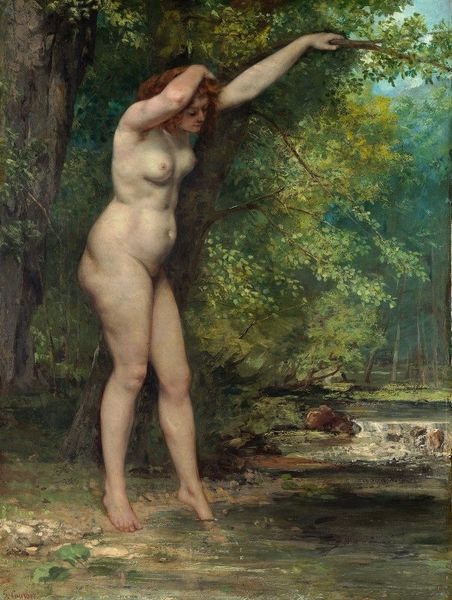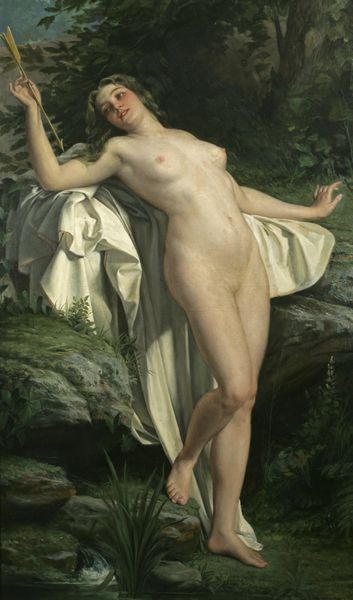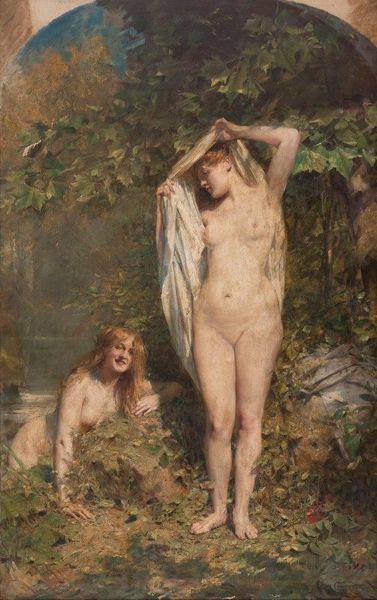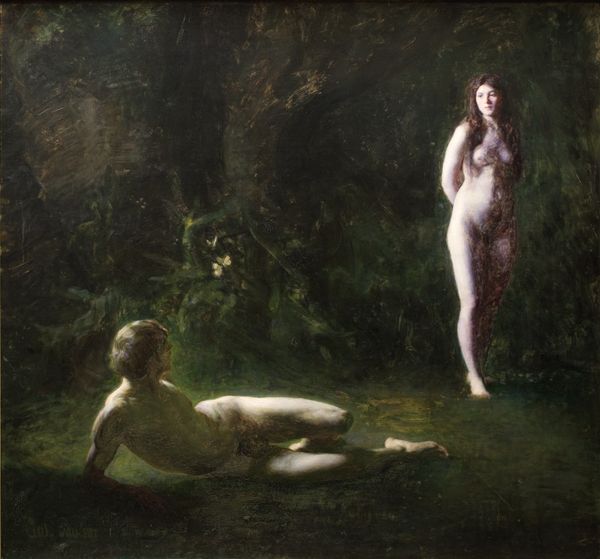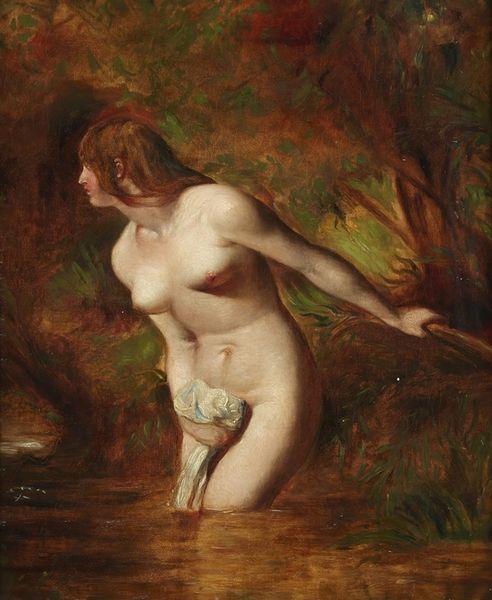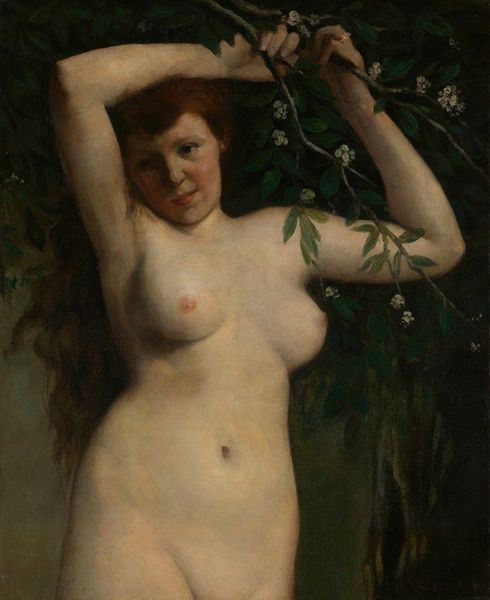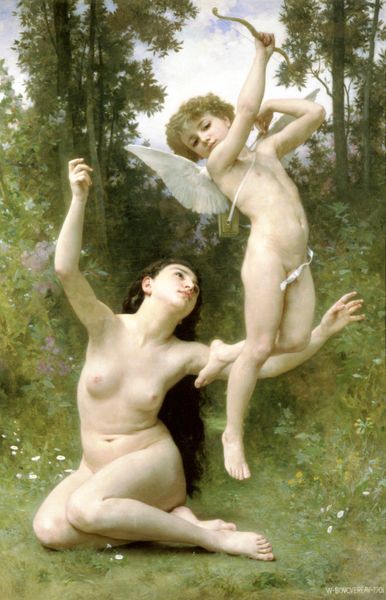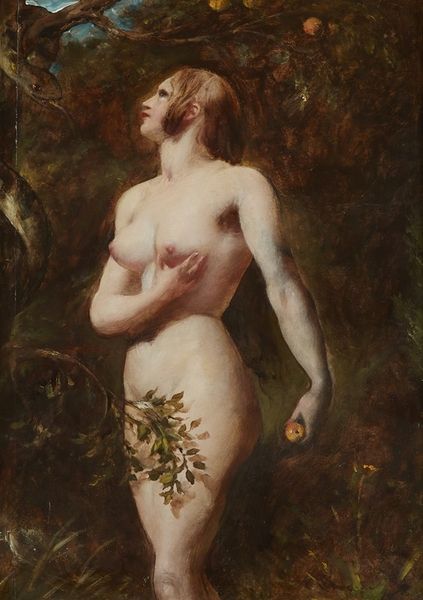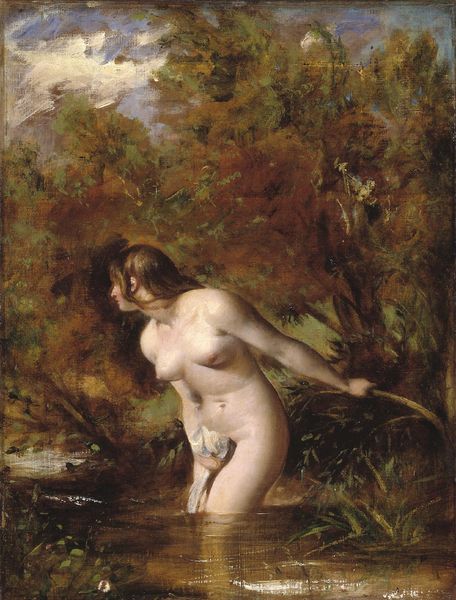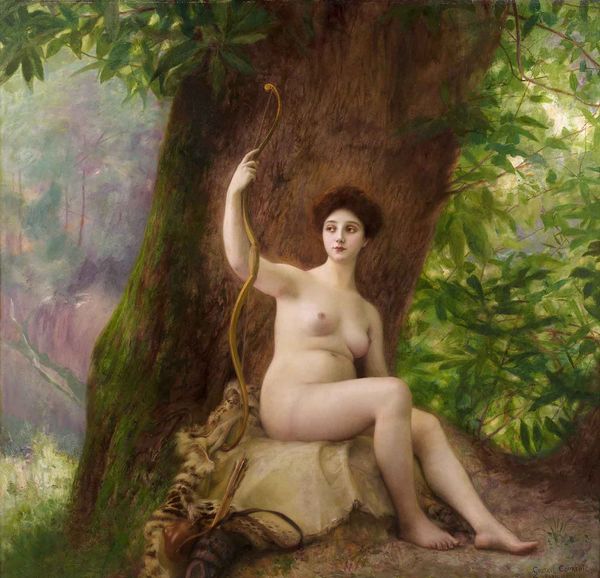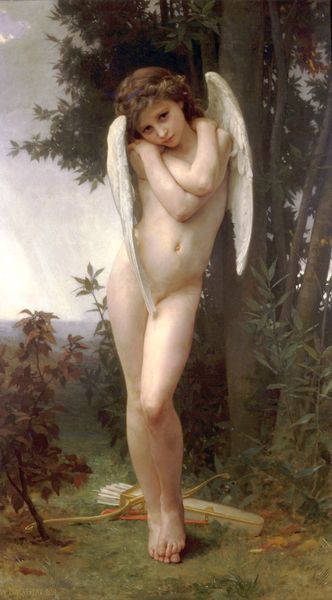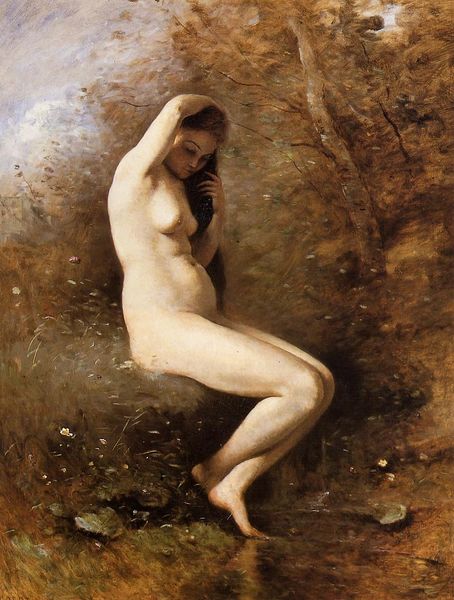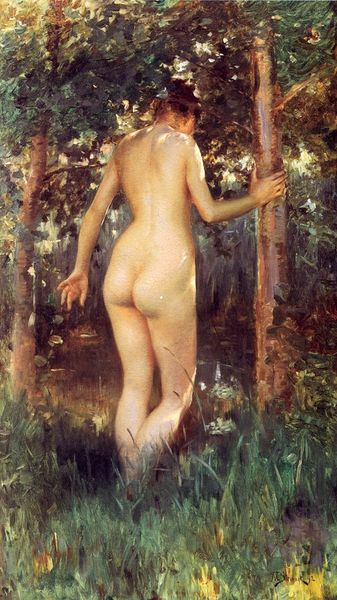
Copyright: Public Domain: Artvee
Editor: This is John Collier’s "Eve," painted in 1911 using oil on canvas. She seems to be fleeing something; there's tension in her pose and expression. The lighting is so dramatic, highlighting her form against the dark, dense forest. What compositional choices stand out to you in this piece? Curator: Observe how Collier employs a limited palette, focusing primarily on earth tones punctuated by the pale flesh of Eve. Consider how the impasto technique, particularly evident in the rendering of the foliage, adds texture and depth, creating a contrast with the smooth, almost porcelain finish of the figure. Are you sensing a dialogue between the figure and ground here, formally speaking? Editor: Yes, the textures definitely draw your eye. But how does that relationship between figure and ground actually *function*? Curator: Note how the darkness encroaching from the sides pushes Eve forward, almost projecting her out of the canvas. The asymmetry, with the heavier mass of foliage on the left, creates a dynamic tension. It's less about a literal depiction of a scene and more about the arrangement of form and color to evoke a psychological state. The lines of sight – both ours and Eve’s – form an implicit diagonal. Do you feel a sense of destabilization emerging from this? Editor: Definitely. The gaze makes you feel uneasy, and you don't quite know why. It makes her vulnerable, like you’re intruding on a private moment of panic or realization. Curator: Precisely! Through these formal strategies—color, texture, composition—Collier transforms a biblical narrative into a potent expression of interiority. This exploration extends beyond mere illustration, instead pushing to investigate complex concepts such as emotion through careful attention to visuality itself. What new insight did you find most interesting? Editor: I never considered how the darkness and asymmetry heightened the drama. Focusing on *how* the piece is put together really illuminated Collier's approach. Curator: Indeed, and perhaps that gives us new eyes for understanding the visual vocabulary itself!
Comments
No comments
Be the first to comment and join the conversation on the ultimate creative platform.
